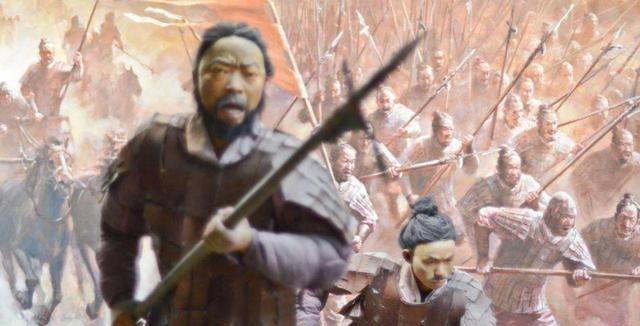The history of mankind is a history that is constantly accompanied by war, and the glory of human civilization is also based on war, and the Yanhuang warlord especially created the ancient civilization of the descendants of Yanhuang. The world is divided, the world is unified, which one has no war. Some places have more wars, some places have fewer wars, and it is usually geography that determines the number of wars. Needless to say, everyone knows that the Central Plains or the middle and lower reaches of the Yellow River are definitely the places where wars are most frequent and frequent. War is a continuation of politics, and war is a matter of what benefits a certain group of forces wants to gain, but it cannot be negotiated. The war is not a street fight, but a crowd of people standing on the ground that cannot be seen at a glance, swords and swords, and blood and flesh.

The Minutes of Reading the History of Public Opinion by Gu Zuyu, a famous scholar of the late Ming and early Qing dynasties, recorded all the wars in China from the Yanhuang War To the end of the Ming Dynasty. There have been more than 6,000 wars in our country, and there are obvious differences in different places and periods. And these differences seem to hide a different civilization about Different Civilizations in China at different times.
The number of wars that broke out was sorted in order of today's provinces and regions, with 820 in Henan, 712 in Hebei, 500 in Shaanxi, 478 in Shanxi, 437 in Shandong, 406 in Jiangsu, 403 in Anhui, 406 in Lianghu and 381 in Sichuan. Let's talk about the bottom six, Guizhou 47 times, Guangdong 95 times, Fujian 107 times, Guangxi 123 times, Jiangxi 126 times, yunnan 130 times.
In ancient Chinese wars, the five dynasties of the pre-Qin, Qin, Han, Wei and Jin dynasties, and the Sui dynasty were mostly in the north, the Song and Liaojin dynasties were half of each, and the Yuan and Ming dynasties were overwhelmingly more in the south than in the north. Therefore, we can see that the distribution of ancient Chinese wars has two major characteristics, one is the war launched in the areas where the Han nationality gathers, with the control of population and fields as the fundamental war, before the Song and Liaojin, there were more yellow river basins, and then there were more in the Yangtze River basin and south of the Yangtze River; second, with the political and economic migration from north to south, the battlefield also moved with it.
Another particularly important point is that the strategic direction and marching line of china's dynastic unification war are very regular and can be explored. From the Xia Dynasty to the Eastern Han Dynasty, it was either from west to east or from east to west; from the Western Jin Dynasty to the Tang Dynasty, east and west coexisted with north and south; and from the Song Dynasty to the Qing Dynasty, it was all east to west, or west to east. Dynastic unification wars, the reunification of the north and the south, generally the north to the south, only the Ming Dynasty is the south to the north, creating a miracle in the history of war and Chinese history.
Xia Shang Zhou, Qin and Han Dynasties, Sui and Tang Dynasties, with Hangu Pass as the dividing line, the guanlong group in the west and the Guandong group in the east. The East-West Two Capital System in this period is the political expression of this geographical distribution. The two major political and military groups control the fate of the country, and those who have to pass the middle first win the world, as Liu Bang and Li Yuan and others can prove. In the southern world, it is not yet fully developed, and the fate of the country is usually determined by the east-west war in the yellow river valley in the north, and who wins wins the world. When the Jiangnan water town was developed and matured, the population and fields increased, and the fate of the country became the Civil War in the Yellow River Basin and the Yangtze River Basin.
Let's borrow a poem to conclude.
Spring and autumn rise and fall, wind and rain fluttering, hegemonic grand plan, say and listen to the mountain ghosts.
The struggle for national fortunes in the Millennium War is all clear on paper.
References: "Reading the Minutes of The History of Public Opinion" Painting "Geographical Distribution Map of Ancient Chinese Wars"